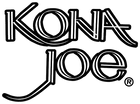Bloomberg Business Week
Brewing Up a Hawaiian Success
By Rachael King
Joe Alban never planned to grow coffee. He went to Hawaii for the waves. By the time he hit the beach with his surfboard, his course in life was already set. He had invested years to become an orthopedic surgeon and was in the last year of his residency in Chicago when he made the trip to the Pacific paradise.
But life has a way of delivering surprises, and Alban got his the day he met Deepa, a Hawaii native. He spotted her on a cruise ship around the island and Deepa was, Alban says, the most beautiful woman he'd ever seen. After much persuasion, she finally agreed to a date. "On my last day, she picked me up in her white Corvette and took me for an island tour," he recalls.
THE GOLD BELT. After dating long-distance for two years, they married in 1990, a bond that also cemented Alban's connection to Hawaii's Big Island although the couple didn't live there then -- and ultimately his path to a successful business in coffee. Alban and Deepa visited the state again and again. On one visit, four years later, Alban, now 45, and Deepa, 40, decided to buy some property so they could one day retire in paradise. They found 20 acres near the Mauna Loa Volcano, with spectacular views of the Kona Coast and the Pacific Ocean.
The property also happens to be located in what's known as the gold belt of the Kona coffee district. Planters had been growing coffee here since the early 1800s.
"We learned some of our neighbors were growing Kona coffee," Alban says. "We tasted the coffee and thought, 'Wow, this is some of the best coffee we've ever tasted.'" So, they planted some coffee of their own. Soon, family and friends began asking the Albans to plant coffee for them as well. The couple kept adding more trees to the property.
WORTHWHILE TECHNIQUE. "I guess I got the farming gene," says Alban, whose grandfather owned a potato farm in Idaho. Alban's father also owns a vineyard in California. One day Alban's brother suggested that he grow coffee on trellises, using the same techniques employed by the best vineyards.
Alban liked the idea and ultimately patented the method of training coffee trees to grow along the wires of a trellis -- a move that paved the way for Kona Joe's success today (see a photo essay of the plantation). The technique requires years of meticulous pruning to get the coffee tree to grow sideways and upwards. But the results, Alban says, are well worth the effort, since the more uniform sun exposure evenly ripens the coffee cherry. This makes the overall flavor richer, with better texture.
Apparently, customers agree -- and are willing to pay $39.95 per pound for his Estate Trellis Reserve coffee. "In 2000, Neiman Marcus stores heard about our farm and asked if we would feature our coffee in their stores," says Alban. Today, he says, demand is exceeding supply. The company is on track to top $700,000 in revenue this year, up from $525,000 last year.
BOUTIQUE COFFEE. The price tag is high because Alban's is a special kind of high-quality Kona coffee, known as estate coffee. In contrast to a Kona coffee blend that's typically gathered from multiple farms (and may only be 10% Kona coffee), estate coffee is the product of one plantation and is 100% pure. The coffee is processed and roasted under the control of the estate farm.
According to the Kona Coffee Council, this produces a set of unique coffees, each with their own label. The council likens estate coffee to the different wines from the individual estates in Napa, as opposed to a generic wine from mixed grapes. Currently, the Kona Coffee Council's program features about 50 estate farms, and Kona Joe is one of them.
Only coffee that's graded prime or better can be used, and once harvested, it can take a backbreaking amount of labor to produce it. After the coffee cherries are picked by hand, they're wet-processed that same day, which means removing the cherry skin and pulp.
BEANS AND BONES. The coffee is dried to parchment over the next three days, and on the fourth day, Kona Joe dry-processes the parchment, removing the husk, and polishing and sorting the beans into graded green beans. The green-bean coffee is placed in cold storage at 65 degrees and 50% humidity for a minimum of four weeks to stabilize the residual moisture.
After that, the Hawaii Agriculture Dept. certifies the coffee. Once it earns a stamp of approval, the coffee remains in temperature- and humidity-controlled storage throughout the year and is removed on the day of roasting. The coffee is roasted in small batches of 25 pounds or less as orders are received. The coffee is then packaged the same day in airtight, nitrogen-flushed foil pouches with one-way gas valves. It's shipped the following day.
And, as it turns out, Dr. Joe and planter Joe Alban can co-exist. Alban still maintains his orthopedic-surgery practice in California, spending about half the month on the mainland and half the month in Hawaii. He says his medical partners are very understanding and help him make his dual life work.
PERFECT BLEND. When he's on the farm, he supervises coffee production, including farming, processing, and roasting. Deepa Alban, who's also an artist, lives full-time on the plantation and does all of Kona Joe's marketing, maintaining existing accounts and working to establish new ones.
Not many people could manage being a doctor and a farmer at the same time. But for Joe Alban, it's a perfect blend. King writes about business and technology for BusinessWeek SmallBiz and other publications.


